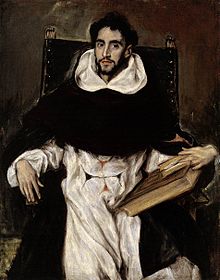
The marquisate of Antella is a noble title given by the king Philip IV of Spain in Sicily to Nicolo Pallavicino on septembre 22nd of 1649 [1][2] due to his support to the Spanish Empire during the Thirty Years War preventing the rebellion of the Neapolitan Republic (1647) and Sicilian rebellion.
Nicolo Pallavicino was a very influent man in Palermo and Genoa as he was the banker of the duchy of Mantua, Vincent I Gonzaga of Mantua and Peter Paul Rubens, in his stay in Genoa, between many others.
Family
Nicolo Pallaviccino was coming from the noble Pallavicini Family, before being honored with the Marquess title, Nicolo was was married with the marquise Maria Serra Pallavicino and after her death he married his second wife Maddalena Strozzi.
Marquisate of Antella, in the painting can be seen the Antella Cathedral and the city center, Antella is a peripheral city of Florence

Marquesate

The marquesate was name after the Italian city of Antella, located in the Tuscany, in the state of Bagno a Ripoli, located 4 miles from Florence.
Coat of Arms: Five blue and four silver squares with a golden top and three flat crosses dressed with a golden marquees crown.
Motto: '"Fidelis Regi usque ad mortem"'
Marquisate of Antella´s History
- Nicolo Pallavicino, I marquees of Antella (Sicily 1649),[1] married with marquise Maria Serra Pallavicino. After Nicolo´s death in 1650, her second wife Maddalena Strozzi marquise of Antella.
- Maddalena Strozzi e di Termine, wife of Nicolo and II marquise of Antella, [2] daughter of Orazio Strozzi marquees of Flowers, who after Nicolo´s death married the Prince of Cassaro, passing the Marquees title to her second son Ottavio.
- Ottavio Gaetani-Strozzi, III marquees of Antella, married with Violante Statella Pipi e Salonia [2]
- Luigi Gaetani e Statella, son of Ottavio and Violante, who got the title on September of 1680.[2]
- (Maria) Gioacchina Gaeteni e Buglio, Princesses of Palagonia, IV marquise of Antella. She if believed that was the inspiration of Villa Palagonia in Sicily, built by his husband Francesco Ferdinando, Princess of Palagonia.
- Francisco de Asís Sánchez y Ruiz-Constantino, V marquees of Antella, rehabilitated the title on October 2nd 1981. [3][1] Supported the king Juan Carlos I of Spain Juan Carlos I of Spain in his succession.
- Juan Carlos Sánchez Peiro, VI marquees of Antella. Obtained the title from Francisco after his death, the V marquees, after the Royal Letter to the King on March 2nd 1998. [4][1]
Art and portraits


Nicolo Pallavicino was portrayed by Peter Paul Rubens on 1604 in Genoa, the same as her wife the marquise María Serra. Years later the marquise of Antella, Gioacchina Gaeteni e Buglio, was also portrait and her portrait is at Villa Palagonia.
Nicolo Pallavicino was also family of the religious poet Hortensio Félix Paravicino portrait by El Greco in multiple paintings such as Fray Hortensio Félix Paravicino and the Burial of the Count of Orgaz.
Buildings named after the noble families Pallavicini, Strozzi and Gaetani
Buildings named after the noble families Pallavicini, Strozzi and Gaetani
- Palace Pallavicini in Vienna, Austria
- Palazzo Pallavicini-Rospigliosi in Rome
- Villa Durazzo-Pallavicini in Genoa, Italy
- Palacio Pallavicini in Bolognia, Italia
- Villa Gandolfi-Pallavicini en Bologna, Italy
- Palazzo Pallavicino in Parma, Italy
- Palazzo Strozzi, Italy
- Palazzo Gaetani, Italy
References
Bibliography
- Emanuele e Gaetani, Francesco (1757). Della Sicilia Nobile (in Italian). Palermo: Stamperia de Santi Apostoli. Retrieved 12 August 2018.
External Links
- "Marchesa Maria Serra Pallavicino". National Trust Collections. Retrieved 12 August 2018.
- Vasallo, Nino. "La perfida duchessa e il brigante mozzateste". Malgrado tutto. Giornale on-line (in Italian). Retrieved 12 August 2018.
__INDEXAR__